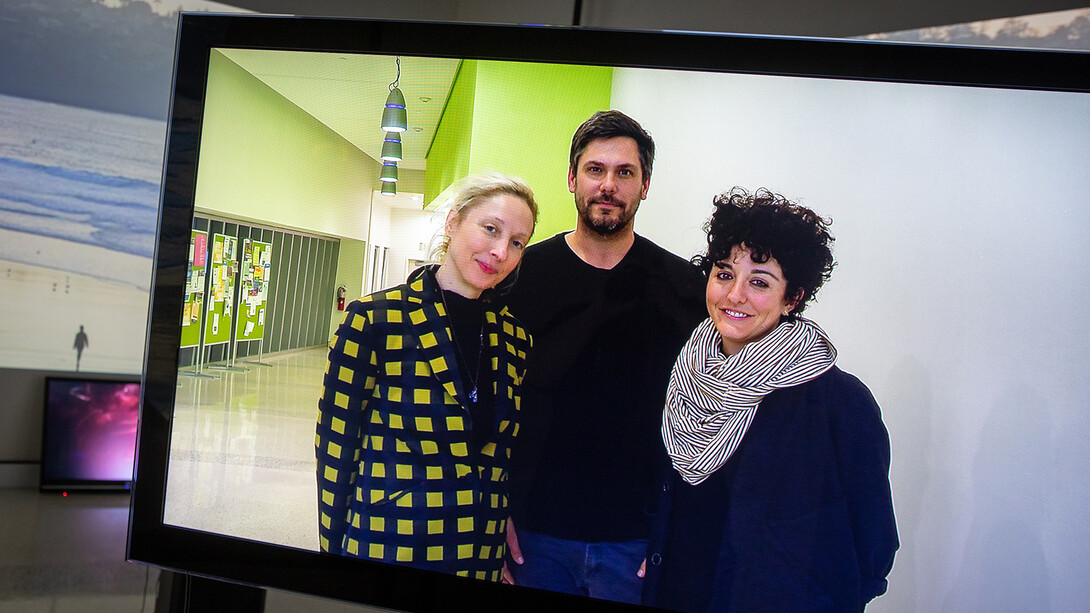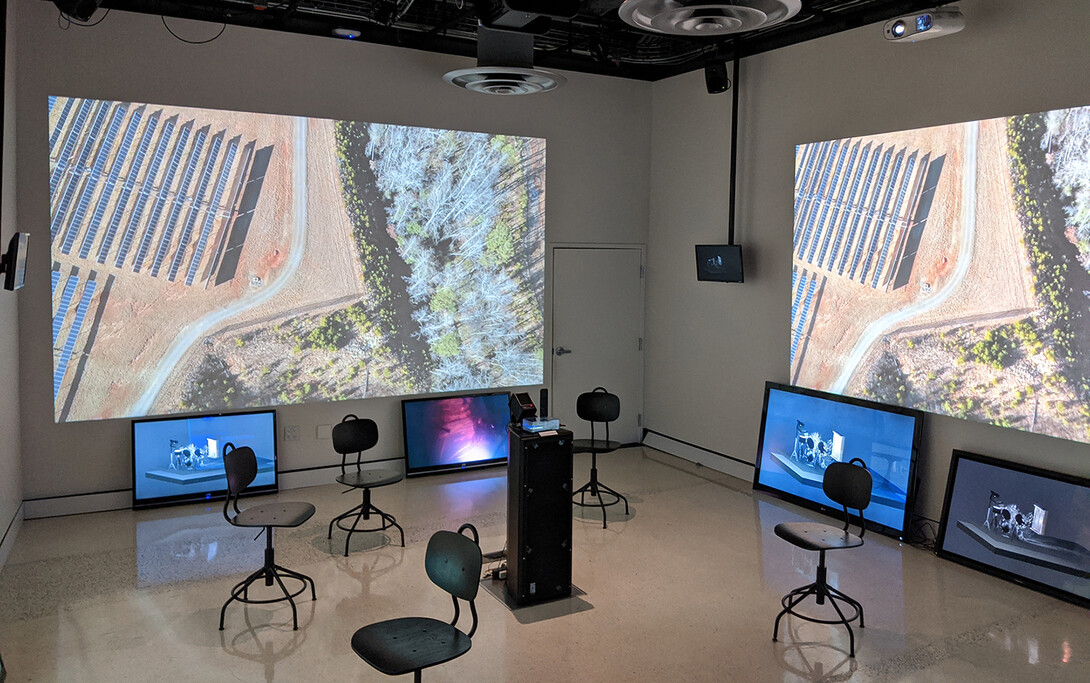
Nebraska’s Ash Smith has co-curated “Streaming,” a new exhibition on display through March 13 at the University of California, San Diego’s Qualcomm Institute.
The exhibition is a study of the physical internet. Featured artworks explore the ecological and social impacts of network culture “streams” and limits for their calculation.
“Streaming” features streaming scenes — surveillance, selfies, substrates and subliminal messages — that pass across the internet, digital and physical, live and archived. Exhibit curators have taken existing live streams and re-presented them in a new platform format in the gallery.
The exhibition is curated by DELUGE, a media-design collaboration of Smith and Stephanie E. Sherman. Working with artist and engineer Robert Twomey, the artistic team worked to create immersive channels that connect art and culture with science and technology.
Smith, an assistant professor in the University of Nebraska–Lincoln’s Johnny Carson Center for Emerging Media Arts, said the exhibition was developed through her own research.
“I had been shooting a film project in North Carolina on data centers and my town,” Smith said. “I grew up in Appalachia, and Apple is there, Facebook is there, and Google, they form a triangle around the town. And so I was really thinking about the effects of the physical internet on the environment, places and populations, specifically where I grew up. The notion for some people that data centers even exist, that the ‘cloud’ is not up in the sky. The cloud is using water resources, or, in some cases, solar and in many cases replacing food farms. So connecting the physical internet with the environment is a huge part of this project.”

The exhibition includes a website platform that hosts the work created and — with an assist by Qualcomm Institute researchers — calculates how much the show is costing in terms of the environmental impact.
A featured artwork by Ben Kreimer, titled “Pipelines,” converts WiFi, Bluetooth and cellular frequencies in the gallery into sound, modulating according to visitor activity.
“In his piece, it’s set up in the middle of the gallery, and you can literally play with it by sending text messages,” Smith said. “Interacting with this invisible architecture will make the sound change, and you can ‘hear’ this invisible world, of another kind of constant streaming.”
Live feeds incorporated into the overall exhibition include the Amazing Fish Cam, which was one of the first livestreams set up by Netscape; the La Jolla Shores Cam; and the One Dollar Hotel, a Japanese hotel that costs $1 to stay for all individuals who livestream their activities.
Smith hopes visitors begin to see the digital world differently and understand the environmental costs.
“I hope viewers connect environmental cost and environmental impact of the physical internet and start to think about the connection between our physical devices,” Smith said. “Sometimes you’ll hear a lot of people say, especially in solidarity with Greta Thunberg and her work on climate change, ‘Well, I’m not going to travel anymore. Instead, I’ll just Skype in, and that will save the environment.’ And we are thinking in terms of ‘Does it really?’ We don’t have the answer to that yet, but we are using the show as a research question to really start to think about the energy output and start computing all those aspects to streaming.”
Smith said the exhibition is directly linked to her work at Nebraska’s Johnny Carson Center for Emerging Media Arts at Nebraska.
“One of our jobs in the university is to point a critical lens at emerging technology to think about what is possible,” she said. “It’s not to say we have all the answers down, but I think with emerging media, we can shape new technologies, and we can shape new systems, and we can shape new kinds of programs so that we can start to think about offsets and things like that.”







